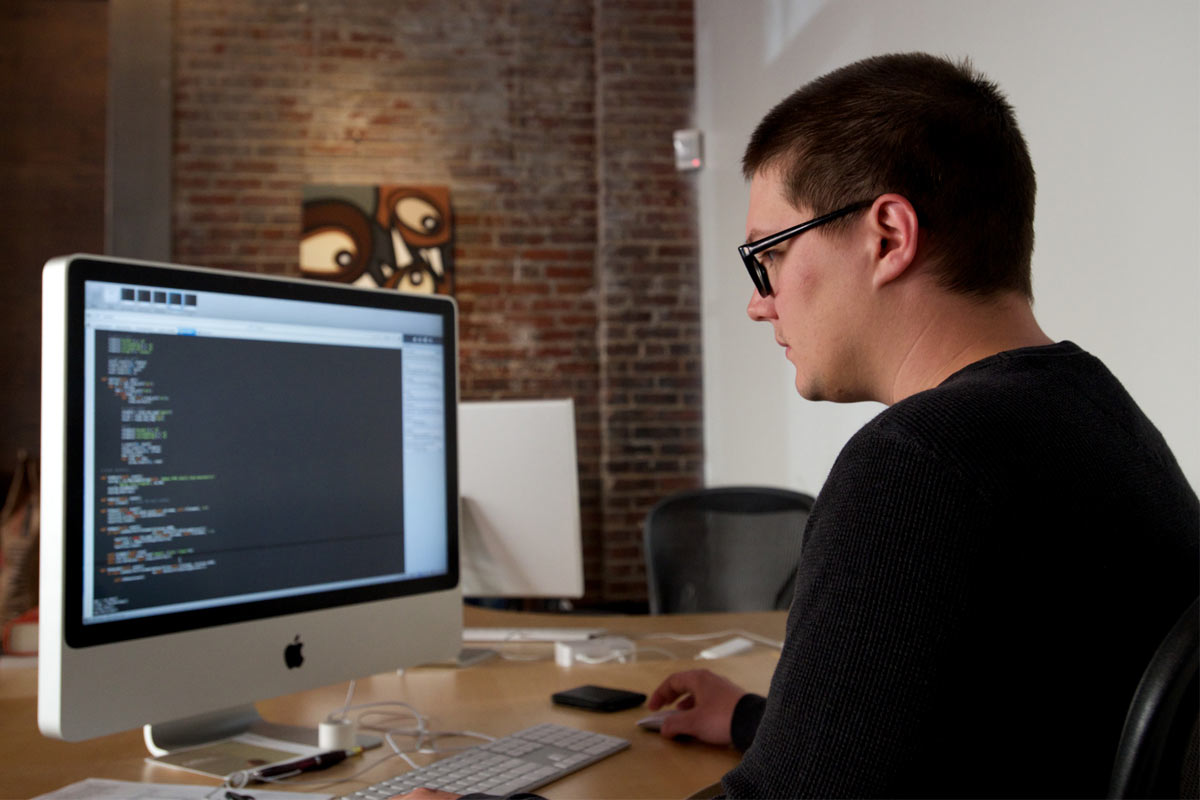Bringing Design to Life
Until a few months ago, I spent all of my time in a print shop. To be specific, it was a letterpress and screen-printing shop, where we still mixed inks by hand, set type, etched metal plates with acid and carved wooden blocks. We printed most of our work one sheet of paper at a time, or on 70-year-old automatic presses that required constant attention and mechanical adjustment. It was one of those jobs that people would talk to me about all the time. “I had an uncle who worked on old presses,” or “I did a little printing when I was in college,” were common things to hear in a conversation about the shop. People understood the basics of running a print shop and making prints.
I eventually came to the conclusion that printing wasn’t what I wanted to do. The daily requirements of the job just became boring. When I finally decided to move on, I became a web developer here at Atomicdust.
When it comes to talking about my job now, the situation is very different. The questions I am asked now are, “What’s a developer?” or “So, wait, what do you actually do?” I figured out pretty quickly that when people ask this, they are not asking about coding. If I start telling them about that part of the job, they get bored really fast.
They want to know what is at the core of my job. Essentially, what makes someone a good developer?
For me, the truest answer to these questions is, “The job I do now is exactly the same one I did in the print shop.” The core of my job is to find the most elegant and efficient way to bring a project from design to final product.
In the print shop, the problem was how to create a perfect set of final prints. I chose the proper paper, set the pressure, adjusted the presses and mixed ink so that the final prints would reinforce the concept and look of the design. If I chose the wrong paper, perhaps a handmade paper when a machine-made paper would be more appropriate, the final prints would look completely wrong. The prints might look rustic and varied instead of slick and precise, undermining the original design.
Now, as a developer, my problem is how to create a perfect website. I choose the proper coding methods and languages, set up the framework for the site and style it so that when it goes live, its function reinforces the concept and look the designers have created. If I choose the wrong framework, it may be too difficult to update or impossible to incorporate social media. If the concepts behind the design are speed and adaptability, the chosen framework will undermine the entire project.
Although the specifics have changed, the backbone of each job is the same: creative problem-solving that serves concept and design. What makes someone good at each is the ability to see a project from design to final product without losing any of the importance of the design, but instead, reinforcing it.

